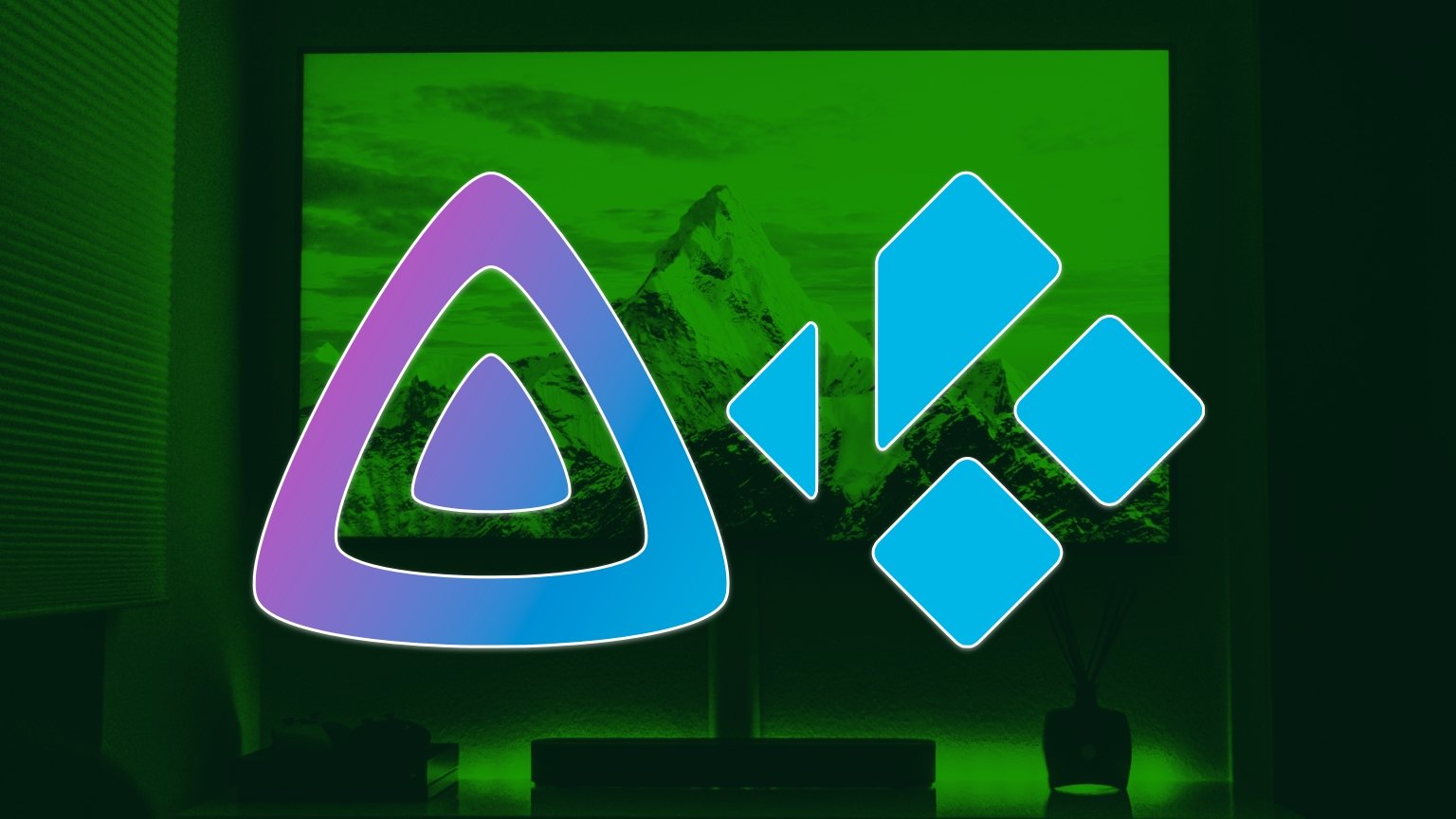Plex is a popular home media server solution that lets you seamlessly stream your personal media library to all of your devices. However, the app is proprietary and most users access Plex on their TV via proprietary digital media players such as Apple TV, Google Chromecast, Roku, and Amazon Fire Sticks. These digital media players often collect lots of data on your viewing habits. Many also share this data with advertisers and other third parties that they work with. Some even insert ads on the home screen.
Fortunately, it’s now easier than ever to escape these proprietary walled gardens by using free and open-source media players, media servers, or smart TV interfaces.
For the maximum level of privacy and freedom, you can replace your Big Tech streaming stick with a computer running a free, open-source media player, media server, or smart TV interface by connecting this computer to your TV and using it to stream your movies, TV shows, music, and other personal media to all your devices.
However, if you want to keep your streaming stick, you can still enhance your privacy and freedom by installing some of these apps on your stick and other devices and using them to stream your personal media.
Benefits of these private, open-source Plex alternatives
Free to use
Plex requires an in-app purchase or subscription on mobile to stream more than one minute of content from a Plex Media Server. These private, open-source alternatives don’t charge any fees and are 100% free to use.
No ads
Several Big Tech digital media players, such as Roku, insert ads on the home screen. These alternatives provide an ad-free experience that’s focused purely on your media.
No tracking or central servers
These open-source media players, media servers, and smart TV interface apps don’t track your activity or send it to central servers. If you use them instead of a Big Tech streaming stick, you can avoid the device-level tracking that usually occurs when you stream content via a streaming stick.
Support for additional media formats
Plex lets you share and stream movies, TV shows, music, photos, and videos. Some of these open-source alternatives expand the types of media you can share and stream and support audiobooks, books, games and more.
Additional features
Some of these private, open-source Plex alternatives have features that aren’t available on Plex such as group watching and support for internet radio.
Things to consider before using these private, open-source Plex alternatives
Limited support for streaming apps
Since the goal of these open-source media player, media server, and smart TV interface apps is to give users the freedom to enjoy their personal media in the ways that they wish, they don’t include the restrictive OS-level digital rights management (DRM) that’s required by most of the popular streaming apps. This means that there’s no official app support for streaming services such as Netflix and Disney+.
Some of these private, open-source apps have unofficial third-party apps, add-ons, or plugins for streaming services but to use them, you have to give your account credentials to an unofficial source.
Additionally, some of these private, open-source apps have a browser that you can use to access these streaming services on the web. However, some streaming services, such as Netflix, restrict the video quality in most browsers.
If you’re using one of the private, open-source smart TV interfaces, this limited support for streaming apps means that you’ll only be able to access these services through the browser.
However, if you’re using a private, open-source media player or media server on Windows or Mac, you can install streaming apps on the same machine and switch to these when you want to watch content from a streaming service.
Media server vs media player vs smart TV interface
This post will be highlighting three types of apps — media servers, media players, and smart TV interfaces.
Media server apps are direct alternatives to Plex that provide very similar functionality. They let you set up one device as a media server and stream your personal media library from this device to your other devices.
Media player apps let you organize, access, and play your media on one device. They’re a good option if you primarily watch movies and TV shows on one device and would prefer to play the content locally instead of streaming it over your network.
Smart TV interfaces install a dedicated, smart TV-optimized operating system (OS) on the device. Some are modified versions of a media player app while others provide a more flexible interface that lets you install apps on the device. They’re a good option if you want to connect a computer to your TV and access your personal media via an interface that’s optimized for the big screen.
6 private, open-source Plex alternatives
1. Jellyfin
![]() A media server app that supports a wide range of media types. Like Plex, it supports movies, TV shows, music, photos, and videos. However, it also supports additional media formats such as audiobooks and books.
A media server app that supports a wide range of media types. Like Plex, it supports movies, TV shows, music, photos, and videos. However, it also supports additional media formats such as audiobooks and books.
Jellyfin has several unique features including SyncPlay (a feature that lets you share a common viewing experience with others and is perfect for watching movies or TV shows with friends and family) and plugins (which let you customize and extend the functionality of Jellyfin).
Its apps are privacy-focused and it says that there’s no tracking, no phoning home, and no central servers collecting your data.
Jellyfin can be accessed on a lots of platforms including the web, Windows, macOS, Linux, Android, iOS, Fire TV, Roku, tvOS, and webOS.
You can get Jellyfin here.
2. Universal Media Server
![]() A media server app that lets you access your personal movies, TV shows, music, photos, and videos on any of your devices via a web browser. The app can be installed on Windows, macOS, or Linux and media can be streamed to a wide range of devices including TVs, smartphones, computers, gaming consoles, and audio receivers.
A media server app that lets you access your personal movies, TV shows, music, photos, and videos on any of your devices via a web browser. The app can be installed on Windows, macOS, or Linux and media can be streamed to a wide range of devices including TVs, smartphones, computers, gaming consoles, and audio receivers.
Universal Media Server also has online functionality which means you can subscribe to and consume content from Really Simple Syndication (RSS) feeds, podcasts, internet radio stations, and more.
The app is private by design and it claims to not track any actions you take in the program.
You can get Universal Media Server here.
3. Kodi
![]() A media player app that supports a wide range of media formats including movies, TV shows, music, podcasts, photos, videos, and games.
A media player app that supports a wide range of media formats including movies, TV shows, music, podcasts, photos, videos, and games.
It has a variety of skins that can be used to customize the look and feel of the app. It also has a huge library of add-ons that let you expand the functionality of Kodi and watch online content.
Kodi has apps for a large range of devices and operating systems including Windows, macOS, Linux, Android, and Raspberry Pi. It also has remote apps for Android and iOS which let you control Kodi with your smartphone.
Additionally, many other apps and devices, including TV remotes, game controllers, keyboards, touchscreen devices, and web browsers, can be used as a remote control for Kodi.
You can get Kodi here.
4. OSMC
![]() A smart TV interface that’s based on Kodi and can be installed on Raspberry Pi and Vero devices. It has a cleaner, more simple design than Kodi which lends itself to bigger screens.
A smart TV interface that’s based on Kodi and can be installed on Raspberry Pi and Vero devices. It has a cleaner, more simple design than Kodi which lends itself to bigger screens.
Since it’s based on Kodi, it supports all of the same media formats including movies, TV shows, music, podcasts, photos, videos, and games.
OSMC also has full support for Kodi add-ons which means it’s easy to extend the functionality of the interface and watch online content or change the appearance of the interface with skins.
You can get OSMC here.
5. LibreELEC
![]() A Kodi-based smart TV interface that can be installed on Raspberry Pi devices and uses the same interface as Kodi.
A Kodi-based smart TV interface that can be installed on Raspberry Pi devices and uses the same interface as Kodi.
It supports the same media types as Kodi which means you can organize and access movies, TV shows, music, podcasts, photos, videos, and games.
You can also customize and change the appearance of LibreELEC or expand its functionality with Kodi add-ons.
You can get LibreELEC here.
6. Plasma Bigscreen
![]() A privacy-respecting, open-source TV interface from KDE — the developers of several popular open-source Linux desktop environments and apps.
A privacy-respecting, open-source TV interface from KDE — the developers of several popular open-source Linux desktop environments and apps.
It’s available in two Linux distributions which can be installed on several single-board computers (including the Raspberry Pi 4), tablets, and smartphones.
You can access and play your local media files with the multimedia player, Plank Player. You can also access online content via Plasma Bigscreen’s media-focused apps which include Soundcloud and YouTube. Additionally, you can run several traditional desktop apps with a redesigned, big-screen optimized interface such as the Firefox browser and the file manager Dolphin.
Plasma Bigscreen can be controlled with a regular TV remote or voice via MycroftAI — an open-source, privacy-focused voice assistant.
You can get Plasma Bigscreen here.
Other ways to boost your freedom and privacy
Switching to one of these private, open-source Plex alternatives is a fantastic way to take back your freedom and increase your privacy when organizing, viewing, streaming, and sharing your personal media library.
If you want to level up your privacy further, consider trying a de-Googled, open-source Android distribution on your phone. Not only will this give you extra privacy when streaming movies, TV shows, or other media on your phone but your privacy will also be boosted whenever you use your phone for anything else.
There are several different de-Googled Android distributions you can try including GrapheneOS (which we have an install guide for here), CalyxOS, and LineageOS. All of these de-Googled Android distributions also support other privacy-enhancing tools and features such as private, open-source app stores, app sideloading, and multiple profiles.










